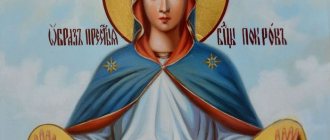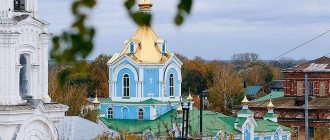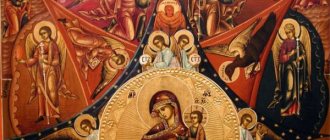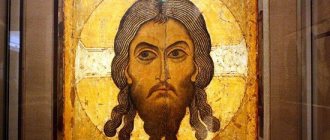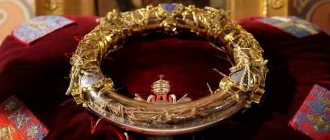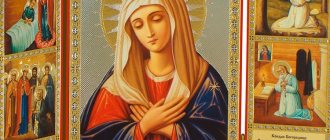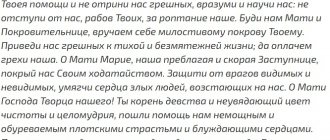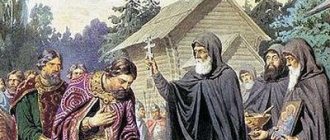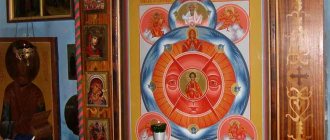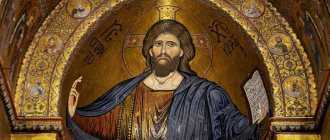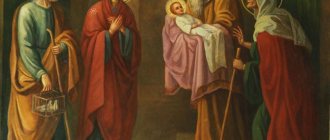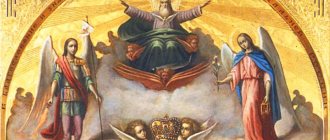Icons are considered one of the most ancient ways of honoring the Lord. However, praying to a shrine is already worshiping an idol. For a believer, it is not the object that is important, but what is depicted on it. Since ancient times, people have prayed to the images of saints depicted on canvas. The icon depicting Jesus Christ has special power. In fact, God the Son can be equated with the saints, since he is captured in his human form.
Unfortunately, humanity did not immediately come to the conclusion that the worship of images is not idolatry. In the period from the 8th to the 9th centuries AD, a procession was organized that advocated the destruction of landmark icons. Frescoes and mosaics depicting saints were also equated with them.
It is likely that the original image of Jesus Christ has not survived to this day. At the direction of the Ecumenical Councils in 787 and 843, the struggle for the destruction of icons was stopped. From that time on, religious ideas on canvases became justified, and most of them have survived to this day.
What does the icon say?
The believer must understand that a canvas with the face of a saint, including the face of Christ, is not truly divine.
A person cannot depict all the holiness and divinity of an image using earthly tools. Only those moments that had an earthly embodiment are depicted. Ancient historians who were lucky enough to see the Savior gave him a detailed description. It’s difficult to trust icons in this regard. The images are not written as carbon copies, but the obvious personality traits are quite recognizable. The main rule that was followed when painting icons with the Son of God is called the golden ratio. Novgorod Spas can serve as an example. The golden ratio will be observed if the icon painter focuses on the following details:
- Cross-shaped halo (has 9 crossbars, according to the number of ranks of the angelic army).
- Eyes. They must be expressive and look as if into the soul.
- The name of the Lord in Greek.
- The name of Christ is allowed to be abbreviated in Slavic writing to I.Kh.
As a supplement, elements of boards (fabric), prayers, and additional characters in the form of saints and angels are used.
What does the icon of Jesus mean?
This holy face has existed since ancient times. Previously, this image had different images. After some time, church icon painters took control of this process and established some special rules that must be observed when painting an image. Since an icon is a kind of intermediary between the spiritual and physical world. Thanks to the existence of holy faces, prayers offered to the saints will be heard much faster.
Each element depicted on the holy face has its own great significance. Each image contains a certain code that reveals the essence of the church, the person and the deep faith. As mentioned above, the icon of Jesus Christ the Savior carries very great significance for the Orthodox Church. The cross depicted on the face symbolizes the torment that the Almighty endured during his crucifixion. In some ancient images you can see the face of the Savior with a vine and grapes. This symbol is the sign of the church. Thus, each element in the image carries a secret meaning that can only be understood by a truly believing person.
Do you have a telegram? If yes, then you will like our Orthodox group: t.me/molitvaikona, come in, we are waiting for you!
In icon painting there is not only a symbolic language, but also each gesture has its own meaning. This was done specifically in order to eradicate the possibility of dual meaning of various icons.
Rare icons of Christ
As was said at the beginning, not all icons with the face of the Savior have survived to this day. The original versions died during the iconoclasm. Today it remains to focus on relatively ancient spellings.
The Cathedral of Christ the Savior contains an image of the God-Man, under the authorship of Evgraf Sorokin. Spas has a large number of individual features: Christ has long hair that falls to his shoulders, and his eyes are low-set. This technique allows you to focus on the eyes, which seem sad. This style is not widely used. Other churches prefer to use the Byzantine model of the Savior.
Prev
Next
The iconography is rich in subjects. For example, an icon of Christ and the Mother of God at the time of his burial. The image cannot but attract attention. Jesus is half in the tomb, and his mother clutches his lifeless body to her chest. This plot describes the events before the Resurrection. Few believed that Christ would rise from the dead; for most it was all over. The composition has many similarities with similar images of the event, although the position of the Savior’s body may change.
Another rare icon is the image of “Jesus in the tomb.” The God-man is in a stone coffin, his body has wounds from torture. The plot has one single purpose - to remind at what price all the sins of mankind were atoned for, about how the Lord suffered for the human race.
The meaning and symbolism of the images of Jesus Christ
The icon of the Lord Jesus Christ is a kind of mediator between the Divine world and the world of worldly people. Before the Face of the Lord they pray for the healing of serious illnesses, ask for help in any trouble, ask the Lord to show them the right path, to make an important decision, even one on which fate may depend. Thanks to the image of Jesus, any prayer will reach heaven much faster.
Today there are two types of images of Christ the Savior:
The image of Jesus Pantocrator and Divine Judge. The image of Jesus in the guise in which he performed his service among people. Christ is also depicted in the guise of a youth or a baby (this image of the Lord is not classified as a separate type).
The image of Jesus always has a cross-shaped halo. The halo symbolizes the Divine light that Jesus showed to his disciples on Mount Tabor. Through the image of a halo, the two natures of the Lord are confessed - the Divine nature and the worldly, human nature.
Many icons of Jesus Christ, in his hands, depict a book: open or closed - the Holy Scriptures, the teaching of salvation with which the Lord came to our world.
Dear brothers and sisters! We invite you to visit the unique resource https://www.slovo-pomoshi.ru/. With its help, you can convey your aspirations to St. Petersburg churches, chapels, monasteries, and also contact the righteous at the place of their burial. We will write a note ourselves, take it to the temple and send you a photo report by email. Turning to God with the help of prayers has helped many people overcome grief, regain health and the joy of worldly life.
Useful articles:
“FOR SASHA...” The events that will be discussed took place in the winter of 1943–44, when the Nazis made a brutal decision: to use the pupils of Polotsk orphanage No. 1 as donors. German wounded soldiers needed blood. Where can I get it? In children. He was the first to defend the boys... Read more
We often grumble: “Why do I have such misfortunes?” We often grumble: - Why do I have such misfortunes? And why do the Mother of God have seven wounds (sorrows) like this? If every day you make at least one bow to the Mother of God, she will not let you go, she will take you under her protection and bring you to the Kingdom of Heaven. If you offended your mother and she cursed you or... Read more
“MOTHER’S ORDER BEFORE DEATH” (be sure to read this note) “Pray for me, child, when I am no longer with you, Don’t drink wine for me, pray in your own words. Take to the poor all that you collected for the luxurious funeral, And I don’t need dead wreaths, you give me a wooden cross. In the bright Temple, my beloved, where the prayer is... Read more
WHAT CHRIST DID FOR US (EXAMPLE) The year was 1919. A regiment of Red Army soldiers stopped near the old count's estate. Late in the evening there was a knock on the door of the house. When the countess opened the door, she saw that a nurse was standing on the threshold. “Hello,” she said, “I accidentally saw how the lists were compiled... Read more
The icon of Jesus Christ Pantocrator is an image that is certainly found in every church of Orthodox believers; as a rule, it is located in the central part of the temple. The face of the Lord reflects the period of Christ’s preaching: the hair is smooth and straight falling on the shoulders, a small beard and mustache, with his right hand he blesses, and his left hand holds the Gospel. The icon of Jesus Christ in the crown of thorns is the suffering face of God, in the crown of thorns, from which they come traces of blood. The crown of thorns represents the image of the suffering and sins of mankind, which the Lord, having submitted to his father, took upon himself.
Must read: Holy Righteous Simeon of Verkhoturye: life, icon, relics
The meaning of the Savior icon
The Resurrection of the Lord is not an idle speculation. For Christians, this is confirmation that the Lord lives and will live. Therefore, believers should not forget about him and always remember the sacrifice he made in atonement for sins. In the bustle of days, when real truths are replaced by false ones, we must not forget about the main thing.
The first people - Adam and Eve - committed original sin, for which they were sent to the Earthly Kingdom as punishment for themselves and their descendants. But the Lord is merciful and until people fully realize their sins and renounce their vicious nature, the path to heaven will be closed to them until death. But there is support. This is Jesus.
Being a man, he knew all the sorrows of life, began to better understand people not from the position of God, but from the position of man. You can turn to Him for help, share your innermost thoughts, and He will definitely help, no matter how difficult the situation may be. The ways of the Lord are inscrutable, but in order to be imbued with Divine Providence, you need to read the Bible.
Prayer should bring peace and tranquility. But man is weak. If there is no feeling of happiness, you should ask for advice from a more experienced believer. Who knows, maybe he will tell you something that will help you get closer to the Kingdom of God.
How to pray to an icon
It is considered one of the main and necessary items of worldly life for Orthodox believers. You need to know that this holy face has its own purpose and it has certain conditions. All this must be kept in mind in order to understand the attributes of the icon of the Almighty. When choosing holy images for your apartment, you should be based on what your heart wants. The icon of the incarnation of the Lord God is considered the main and necessary element of the righteous life of believers. You can choose both a true divine image and one that is rich in attributes.
In Greek, Pantocrator is translated as Pantocrator. What does the ability to do a miraculous phenomenon mean, which is considered the privilege of the Almighty.
When turning to an icon
Being an earthly creature, man is weak. His soul is constantly subjected to tests, in which he can pass successfully or plunge into the abyss of despair from his helplessness. At such moments, comfort is needed. Prayer directed to the image of God’s Son will help ease the soul. A pure and righteous heart will always find help in His face, will be able to cleanse itself and take a fresh look at the world.
For what reasons do people turn to the Savior:
- Help in difficulties . There are situations when life brings only grief and disappointment. Ask Christ for help, he will help.
- In healing illnesses . No matter how perfect medicine is, sometimes doctors throw up their hands to the sides, not knowing how to cure this or that ailment. When there are no more options left, a person turns to his last Defender, the ultimate support that prevents him from falling into despondency - the Savior.
- Protection from dark forces . Every day we meet different people. Some people treat us favorably, while others bring darkness and malice with them. A sensual prayer to the Savior will help protect you from darkness.
Texts of prayers before the icon
There are many prayers to Christ. But the most common one, with which he himself advised the Apostles to turn to the Heavenly Father, is the “Our Father” prayer.
First
Our Father, who art in heaven! Hallowed be Thy name, Thy kingdom come, Thy will be done, as it is in heaven and on earth. Give us this day our daily bread, and forgive us our debts, as we forgive our debtors, and do not lead us into temptation, but deliver us from the evil one. Amen.
Second
Master Lord Jesus Christ my God, who, for the sake of Your ineffable love for mankind, at the end of the ages was clothed in flesh by the Ever-Virgin Mary, I glorify Your saving providence for me, Your servant, Master; I will sing praises to You, because for the sake of the Father I have known You; I will bless You, for whose sake the Holy Spirit has come into the world; I bow to Your Most Pure Mother in the flesh, Who served such a terrible secret; I praise Your angelic faces, as the singers and servants of Your Majesty; I honor John the Baptist, who baptized You, O Lord; I honor the prophets who proclaimed You, I glorify Your holy apostles; I triumph and the martyrs, and I glorify Your priests; I worship Your saints, and I cherish all Your righteous ones. I bring such and such a many and ineffable face of the Divine into prayer to You, Thy all-generous God, Thy servant, and for this sake I ask forgiveness for my sin, grant me all of Thy for the sake of the saints, more than Thy holy bounties, for Thou art blessed forever, amen.
How the face is depicted
There are a huge number of images - “The Savior on the Throne”, “The Savior in Power”, “The Savior Emmanuel”. But no one has canceled the general rules of writing. Icon painters try to follow the canonical rules for depicting the faces of saints. One of them is the golden ratio rule.
We mentioned it at the beginning, but did not give its full characteristics. What is its meaning? We will try to give the answer in this section.
So, the main element of each icon is not only the image of the saint, but also the accompanying elements. For example, a halo. Translated from Latin as “cloud”, “fog”, “halo”. Christ first revealed it on Mount Tabor in front of his disciples, who were amazed in the first seconds by the beauty of the miraculous light. 9 lines, according to the number of angelic ranks, at the intersection form a cross - the main symbol of Christianity. Depicted on top of a halo.
The inscriptions are of particular importance. This is how three Greek letters are traditionally written, which together have a translation as “I Am Who I Am” - one of the names of the Almighty. This is how the Creator introduced himself to Moses for the first time.
The flowers contain the dual nature of Christ. The red color means his life as a person, the blue color means his heavenly existence. The Savior Himself is the conductor between the Heavenly and Earthly kingdoms. His death and resurrection became a fact of renewal of the contract not with the Jewish people, but with all humanity. Now everyone can accept faith in God and get a chance to enter the Heavenly Kingdom, where there is eternal bliss and peace.
They say eyes are the soul of a person. The same applies to icon painting. The look of Christ can be sad or full of hope for the forgiveness of the human race. This technique creates a real presence effect. The believer can clearly imagine his own communication not with the canvas, but with God in his earthly manifestation.
To whom and in what ways does prayer before the image of Christ help?
The Lord helps all people who offer their prayers to Him with a humble heart and repentance. To everyone who sincerely strives to save their soul, helps their neighbors, tries to live, keeping the commandments and His holy will, Jesus extends His helping hand and leads them into the Kingdom of Heaven.
His icon occupies a central place in the iconostasis of the temple and in the prayer corner of every Orthodox Christian. Why do we honor Him so much? Because He is our God, who loves us all very much and cares about our salvation. He really wants each of us to enter the Kingdom of Heaven and enjoy Eternal Life with Him. A detailed biography of the Savior can be read in the Holy Gospel.
The Lord Jesus Christ is the first to whom we offer our daily prayers, he is our main helper in any life situation, we pray to Him:
- For any difficulty, danger and misfortune;
- About helping our family and friends;
- About forgiveness of sins and our correction;
- About healing from various ailments;
- About getting rid of despondency, anxiety and sadness;
- We thank Him for joy, success, happiness and health.
The role of the icon in Orthodoxy
Orthodoxy came to Rus' back in 988. To this day, people go to the temple to receive help from the Lord. The icon of Christ plays an important role in this process. What significance does it have within the framework of Orthodoxy and for the ordinary believer?
Through the image depicted on the icon, the veneration of the Almighty occurs in all His manifestations. The icon of Christ is considered not an idol, but a gateway to the Heavenly Kingdom. And prayer is the key. Thus, believers become closer to Christ day after day, receive long-awaited healing or guidance on solving personal problems.
Since ancient times, Orthodoxy has been considered a zealous branch of Christianity. But the Lord is merciful to the Orthodox, because he sees their piety and the power of faith. The icon of Christ is only a guide, and not an object of faith. Every believer knows that God is not in the icon, he is in the heart. The image only helps you feel connected to your inner God and become closer to him. After the atonement of Christ this became possible. Man gained a chance to return to the Kingdom of God. And the Savior will help him with this.
INTERESTING: Prayers of thanksgiving to the Lord and all the saints.
On some features of the iconography of the Crucifixion
| Il. 1. El Greco. Crucifixion. 1588 |
Until recently, there was an opinion that the image of the Crucifixion was not found in Christian art while the execution of the cross existed[1].
And only supposedly from the 5th century, when civilized humanity finally left it in the past and memories of it became legend, then the first images of the suffering of Christ appear, and at first very conditional, as if in hints, and not in the form of real scenes. However, not so long ago, in the town of Iruña Veleya in northern Spain, a clay fragment with an image of the Crucifixion was discovered, presumably dating back to the 3rd century A.D.[2]. And soon an even more amazing discovery followed - in the Holy Land, which the press hastened to report: on the Mount of Olives, an archaeological expedition discovered an allegedly early Christian grave, in which a cross was found. These discoveries, however, have not yet received reliable estimates from experts, but even before them, some researchers believed that the first images of the Crucifixion date back to the 1st–3rd centuries. The most famous monuments that have reached us date back only to the 5th century. Let us name two of them here: the Crucifixion on a door relief in the Church of Santa Sabina in Rome and on a tablet in the British Museum. The image on the British avoria is expressive, representing a relief of the same time, with an already developed iconographic program of the Crucifixion. On the Roman door there are simply three human figures with arms outstretched crosswise, one of which, the central one, is larger than the other two. Therefore, Yu.G.’s statement is completely unfounded. Bobrova: “The image of the historical crucifixion with the figure of Christ began to spread only after the decisions of the Ecumenical Council of 692, which abolished the symbolic replacements of the image of Christ”[3]. The monuments themselves refute such opinions.
Thus, the Monk Anastasius, abbot of Mount Sinai, (c. 600–695), wrote a polemical work against the Monophysites, “Guide,” illustrating it with an image of the Crucifixion. At the same time, Anastasius was the first to use the Greek crucifix, that is, an eight-pointed cross.
Is it possible to agree with V.N. Toporov is that the cross is a sign of death, funeral (why is it supposedly installed on the grave as a hieroglyph of death, as a sign of crossing out, abolition, cancellation, etc.)? [4] In any case, the “Handbook of a Clergyman” says about the opposite: “The cross over the grave of an Orthodox Christian is a silent preacher of blessed immortality and resurrection; planted in the ground and rising to heaven, it signifies the faith of Christians that the body of the deceased is here in the earth, and the soul is in heaven, that under the cross is hidden a seed that will grow for eternal life in the Kingdom of God.”[5]. Apparently, secular people perceive the cross as a sign of death due to the fact that a skull began to be depicted inside the Calvary Cave from the 9th century - according to N.V. Pokrovsky, a symbol of death, and not Adam’s head, as G.D. thought. Filimonov. “A cross with Adam’s head at the foot would lose all meaning of the cross as a symbol of victory and salvation and would receive a completely opposite meaning,” writes N.V. Pokrovsky. - Indeed, what significance could the head of the saved Adam, trampled on by the cross - a symbol of salvation - have? It is clear that the later symbol of death, having replaced the oldest symbol under the influence of a softening of concepts, received, under the same influence, an interpretation of Adam’s head that was completely alien to its nature.”[6] However, Filimonov’s opinion is confirmed in the writings of early Christian authors. The tradition of Adam's burial on Golgotha has been known since the 3rd century AD. Origen, for example, saw Divine Providence in the coincidence of the burial places of the progenitor and the crucifixion of the Lord. The main reason for this conclusion for the famous Alexandrian theologian were the words of the Apostle Paul: “As death is through man, so through man is the resurrection of the dead. Just as in Adam all die, so in Christ all will live” (1 Cor. 15: 21–22)[7]. Tertullian thought similarly[8]. Saint Basil the Great, explaining the term “place of the skull,” told us about an unwritten legend according to which Adam’s skull was buried on Golgotha[9]. Many apocrypha also tell about the same thing, with the only difference being that according to some of them, Adam was buried on Calvary by angels, and according to others, by Seth, who transferred the body of his parent there after the flood, according to others, the head ended up on Calvary along with the waters flood In this regard, we should recall the eloquent legends about the tree of the cross, which grew from grain - from the seed that Seth placed in the mouth of the deceased Adam. People then uprooted the tree and brought it to Jerusalem to build a temple. Then it was discovered: the roots had penetrated the skull of an unknown person. The head was separated from the roots and thrown away. But during a hunt she was found by King Solomon, who decided to move his find back to Jerusalem. This is what they did, piously covering the skull with stones (they are now almost naturalistically reproduced by church craftsmen at the foot of numerous “calvary”). And the wood was later used to make the Cross on which Jesus Christ was crucified. The blood gushing from the wounds of the Lord watered the head of Adam and washed away the ancestral sin. The altar for proskomedia symbolizes the place of execution in the temple where Christ suffered on the cross and where the skull of the culprit of the Fall is buried. Therefore, was G.D. so wrong? Filimonov?
Let us turn to other details of the Crucifixion. In ancient times, both Western European and Byzantine artists painted it with the same number of nails - four, that is, each hand and foot of the Savior was nailed with a separate nail. But from the 12th century in the West, feet increasingly began to be depicted stacked one on top of the other and pierced with only one nail. This detail quickly turned into one of the significant differences between the Orthodox and Catholic Crucifixions. Thus, Grand Duke Vasily Vasilyevich in 1441 informed the Patriarch of Constantinople Mitrofan, accusing Metropolitan Isidore of Moscow, a signatory of the union with Rome, that he, having returned to Moscow, during the procession to the Assumption Cathedral, ordered to carry in front of him the Latin Crucifix, on which the Lord’s feet were pierced with one nail[10]. The Greek icon painter Theotokopouli, who moved to Spain in 1576 and undoubtedly converted to Catholicism there, becoming the famous artist El Greco, was “embarrassed” every time he worked on the Crucifixion. In almost all of his paintings in this subject, the second leg of Christ is so drawn into the shadow that it is difficult to understand whether one or two nails pierced the feet of the Crucified One (ill. 1).
| Il. 2. Unknown artist. Cross from the Temple of San Damiano. XII century Assisi |
The natural question is: for what reason did the Eastern and Western traditions diverge in the depiction of this iconographic detail?
The Orthodox explain their features of the image by faithfulness to historical tradition: The cross brought by Queen Helena from Jerusalem to Constantinople had marks from four nails, which means that Christ’s feet were nailed each separately. For Catholics, the basis is the three nails of the Crucifixion, stored in the Vatican, and subsequently the data from the Shroud of Turin, in the prints of which the left foot is placed so on the right that it is quite possible to assume that they were pierced by one nail. These interfaith iconographic contradictions are explained by scientific research of the twentieth century. The authoritative French surgeon Pierre Barbet, who carefully studied the shroud and the difference in the prints of the right and left feet, concluded that the right foot was quite clearly distinguishable, but only the heel of the left was imprinted because when the nails were pulled out and the body was wrapped in the shroud, the blood, flowing down, flooded the heel of the foot. Barbe came to an unequivocal conclusion: the legs of the Crucified One were nailed with two nails. The commonality of just such an execution was confirmed by archaeological finds in Giv'at ha-Mivtar, a suburb of Jerusalem, where in 1968, during the construction of a road, a bulldozer destroyed an ancient burial ground with the remains of 35 bodies buried there in 50–70 AD[11]. Among other things, an ossuary containing the bones of a crucified man was found. His name was Johanan. Scientists have reliably established that the sufferer’s legs were also pierced with two different nails.
Thus, we can conclude: Orthodox iconography has a solid historical basis, and adherence to church tradition has again put to shame arrogant rationalism in understanding the facts. However, for the sake of objectivity, it should be noted: Catholics are not so categorical in relation to images of the Crucifixion. For example, a cross from the Temple of San Damiano in Assisi (XII century) - one of the main relics of the Franciscan Order, painted by an unknown Umbrian artist - with four nails [12] (ill. 2). A similar Crucifixion can be seen in the Kiev Church of St. Nicholas of Myra. There are other monuments. This means that for Catholics in those days it was not so important. That is why, apparently, El Greco, taking the second leg of the Savior into the shadows, did not feel much fear of being accused of Greek schism before the then all-powerful Inquisition, and Zurbaran generally painted the legs of the Savior, although crossed, but pierced with two nails.
| Il. 3. Emmanuel Lampardos. Crucifixion. Cretan school. Second quarter of the 17th century. |
Let's say a little about hands. All the icons clearly show how the Savior’s hands are nailed to the Cross. Today it is common knowledge that it is impossible for a person to stay on the cross if he is nailed like the Savior on the Crucifixion icons. The small bones of the palms, especially at the point of their connection, are not capable of supporting the weight of the human body: it will fall off the cross, which was confirmed by Barbet through numerous experiments he carried out in the anatomical theater. From the traces of blood on the Shroud of Turin, the French surgeon proved that in reality the crucifiers drove nails between the ulna and radius bones of the forearm, next to the wrist. However, on Orthodox icons, nails are driven exclusively into the palms of Jesus. This is canon. Were the Byzantines really unfamiliar with the “technology” of such execution? No, we already know that even after the reign of Emperor Constantine, people continued to be crucified on crosses. Therefore, the point here is not the absence or presence of real experience, or even historical realism, but the saturation of the image with symbolic meaning and significance. Let's pay attention to the position of the robbers' hands. What do we see? In ancient images, their hands are often pulled behind their backs and tied to a vertical pillar of the cross or simply on both sides of the crossbar (Fig. 3). Therefore, icon painters consciously emphasize the features of the image of the Savior’s hands[13]. In patristic theology there is a term kenosis
, meaning exhaustion, humiliation, belittlement of God[14]. Dogmatic theology considers Golgotha the highest point of kenosis. It is logical to assume that the lowest point of human fall is the crucifixion of the Son of God by people. Humanity drove forged nails into the very hands that fed and watered the hungry, healed the hopeless, gave people grace and
“hold” the universe itself. The pierced hands of the Savior serve as an indication, on the one hand, of the immeasurable height of humility and kenosis, and, on the other, of the insane insolence and ingratitude of human pride. If icon painters had followed the path of the “truth of life”, moving the nails from their palms to the place where they were actually driven in, this meaning would have been blurred. But it turned out to be so important for the Church that it decided to transform it into the canon of the Crucifixion icon.
A noticeable distinguishing detail between the Catholic and Orthodox Crucifixion is the crown of thorns on the Savior’s head. The overwhelming majority of Russian and Byzantine icons of all centuries do not have a crown. As an exception, two images can be pointed out: the 8th century from the Sinai Monastery of St. Catherine and the 14th century from the festive rite of the St. Sophia Cathedral in Veliky Novgorod. But these deviations from the canon, due to their small number, can be ignored.
N.V. Pokrovsky believed that priority in painting the crown belonged to Catholic artists; they began to depict him “in the 12th–13th centuries in order to enhance the suffering appearance of the Crucified One”[15]. This outstanding iconographer obviously did not know about the existence of the mentioned Sinai icon. Contemporary art critic and restorer V.V. Filatov, on the contrary, suggests that “from Jerusalem this feature was brought to the Catholic West by the Crusaders and there it became firmly established in the iconography”[16]. But the Orthodox themselves, until the 17th century, rejected the crown on the Crucifixion (we leave exceptions in brackets). As far as we know, in the 17th century it was first found only in the Siya Gospel.
| Il. 4. Crucifixion. XII century Museum of Byzantine Art. Athens |
The tilt of the Savior’s head was also fundamentally important.
On Orthodox icons we see it bowed to the right shoulder (Fig. 4), however, Western artists, following “realism”, often depicted the head without tilt, looking directly at the viewer, and if they depicted it bowed, then often at the chest, but also straight . The reason for this Orthodox specificity cannot yet be satisfactorily explained. You should pay attention to two options for depicting the Savior’s eyes. In one case the eyes are closed, in the other (more often in early monuments) they are open. It seems that here the Byzantine icon painters placed different emphasis: the Savior, with open eyes, recalls His Divine immortality, and with closed eyes, He lays down His life for “His sheep.” There is also a connection between the Crucifixion and the liturgy. Quite early (from the 5th–6th centuries) in the iconography of this image, figures of warriors appear on the sides of the Cross[17]. One of them gives the Savior a sponge with vinegar, and the other pierces Him with a spear (ill. 5). On the vast majority of ancient Orthodox icons, this wound occurs in the right side. Likewise, during the proskomedia, the first particle is taken out of the Eucharistic lamb from the right side precisely in connection with the perforation of the Lord’s right rib. Moreover, the weapon with which the priest removes the particles is called a “spear” and in shape actually repeats the tip of this weapon. “The interpretation of the symbolic meaning of the wound inflicted on Christ by Longinus, and the blood and water pouring out of it, goes back to Augustine,” reports A. Maykapar. “Holy blood and water are symbols of the holy sacraments - the Eucharist and baptism, and just as Eve was created from a rib taken from Adam, so the two main Christian sacraments poured out from the pierced rib of Christ, This New Adam.”[18] Sometimes on ancient icons you can see an angel collecting blood and water pouring out from the Savior’s wound into a cup (ill. 5, 9). This further emphasizes the Eucharistic theme. Chain real event – liturgy – icon
completely obvious, and every link in it testifies to its inseparability.
| Il. 5. Crucifixion. 1535 Great Lavra. Athos |
Medieval artists placed not only warriors at the Cross. From the 3rd, and not from the 6th century, as is commonly believed, the Mother of God and John, the future Theologian, were depicted there; later Mary Magdalene, Mary of Jacob, Mary of Cleopas and Salome were painted (three of them stood at the Cross, although artists sometimes painted more) [19]. Their profound images can be seen on the mosaic in the niche of the naos in the monastery of Nea Moni (Chios; c. 1050), on the Serbian fresco from the Church of the Virgin Mary in Studenica (1209), on the Byzantine icon from the reliquary of Cardinal Vissarion (middle XV century). Dionysius also expressively presented the three myrrh-bearers in the Crucifixion for the Trinity Cathedral of the Pavlo-Obnorsky Monastery (1500) (ill. 6)[20]. And nowhere, before the times of decline, is there almost a theatrical mise-en-scène, with loved ones supporting the exhausted Virgin Mary, as is often found in Catholic painting[21]. Everywhere the Most Pure One does not die of grief, but “dies with Her Son,” as Archimandrite Agathangel (Dogadin) put it,[22] courageously enduring the greatest sorrow when “iron pierced Her soul.” The sensual scene of “dying” belittles the spiritual feat of the Mother of God, if not deprives Her of this feat altogether.
| Il. 6. Dionysius. Crucifixion. 1500 |
Despite their intelligent nature, the angels, who usually hover over the Cross and cover their faces with a himation, also have compassion for Christ. St. John of Damascus confirms their potential to grieve: “Being above us, as incorporeal and free from all bodily passion, they, however, are not dispassionate, for only the Divine is dispassionate.”[23] Dionysius has another register of angels, but not mourning, but busy with the establishment of the Church in the form of a female figure in red and the expulsion of the Synagogue in the form of a woman in a crimson maforia turning back (ill. 7). Both the Church and the Synagogue have the same halos. The calling of both is to gather people in the name of God. According to Dionysius, at the Cross the Church receives its sacred rights, and the Synagogue loses them. However, it is not Dionysius who has priority in the development of such iconography. Its genesis is connected with the literary work of early Christian writers. In one of them, Clement of Alexandria, one can find two comparisons: the Church - with a pious woman with many children, and the Synagogue - with a mother who lost numerous children because of her unbelief[24]. Later, such allegorization will find support in miniatures, and then in monumental painting[25]. But in Rus' it will become relevant only at the end of the 15th century, on the occasion of the heresy of the Judaizers.
| Il. 7. Dionysius. Crucifixion. Fragment |
Let us also pay attention to how the icon painters depicted the reaction of nature on the “Crucifixion” icon. They undoubtedly found the basis for this in the texts of Scripture. As you know, the evangelists talk about the darkness that broke out from the sixth to the ninth hour (Matt. 27: 45; Mark 15: 33; Luke 23: 44–45). Such a detail, unlike the earthquake that took place, is “more convenient” for the expressive means of painting. Therefore, images of the sun and moon have been included in church art since the 6th century (see, for example, the Gospel of Rabbala, 586), and not in the form of intricate ancient allegorical characters galloping on chariots or carts, similar to those found in Western monuments, but in the form of round faces (ill. 8)[26]. The moon, remaining in the circle, was sometimes depicted in profile[27]. The sun and moon on crucifixes have no direct connection with antiquity and its mythology. Both in the Gospels and in icon painting we are dealing with the eschatological nature of the depiction of nature, and that is why the moon is often depicted red, and not the sun. This is consistent with the words of Revelation: “And behold, there was a great earthquake, and the sun became dark as sackcloth, and the moon became like blood” (Rev. 6:12). We find a similar prediction in the Acts of the Holy Apostles: “The sun will be turned into darkness and the moon into blood, before the great and glorious day of the Lord comes” (Acts 2:20).
| Il. 8. Crucifixion. 1520 Cyprus |
The story of the Evangelist Matthew about the rising from the graves of the dead undoubtedly echoes the theme of Judgment Day. He finds an extensive continuation in the apocryphal Gospel of Nicodemus, which directly influenced iconography, especially in the genre of book miniatures[28]. Representative in this regard is the fascinating story of the resurrected Karin and Leukia[29], who are interpreted there as the children of Simeon the God-Receiver. But in icon painting such images are quite rare.
| Il. 9. Crucifixion. XV century Greece |
Much more often, starting from the 5th–6th centuries, isographers painted robbers crucified on both sides of Christ (ill. 9).
Their names are preserved in ancient sources, but they all call the robbers differently. In the Arabic Gospel of the Savior's childhood these are Titus and Dumas; in the Gospel of Nicodemus - Dismas and Gestas; in Erminia Dionysius Furnoagrafiot - Thesda the Jericho and Dima the Galilean; in a 16th-century manuscript from the library of Novgorod Sofia - Arag and Gesta; in the Word about the suffering and death of Christ according to manuscripts of the 16th–17th centuries - Dismas and Gevsta; in the originals dedicated to the passion of the Lord - Dijmon and Esta[30]. In Rus', the prudent robber on the northern altar doors was designated as Rakh, but, according to Pokrovsky, this name is not associated with any literary sources. Its origin is unknown. To emphasize the hierarchical significance of the central image, most icon painters sought to iconographically identify and show the differences between the Savior and the robbers, even in detail. Thus, the main clothing covering the nakedness of the unfortunate was not a bandage, but a perizoma; As already mentioned, robbers were often not nailed to crosses, but rather tied; on the miniature of the Gospel from the university library in Athens (12th century) we see the Lord with a seven-pointed cross, and the robbers with a four-pointed one. Most likely, there were a number of other differences that were not taken into account here. Further differentiation went directly between the robbers: at the beginning of the Middle Ages, the malevolent Gestas was depicted with a beard, later - the prudent Dismas, for at the dawn of Christianity ancient concepts of beauty were still reflected, and with the development of the Christian worldview, the beard became one of the important signs of the image of Christ in man (remember in Connected with this is at least the resistance of Russian Old Believers to shaving their beards). In conclusion, it is necessary to especially emphasize the importance of iconographic details, although we have not considered all of them. As the Holy Fathers teach, there is and cannot be anything superfluous in the Church. So it is in the icon. She is a consequence of the Incarnation, she is the source of comprehension of Divine Wisdom, for in her everything is announced by heaven and comprehended by the conciliar consciousness. We could see this in the example of one of the central picturesque images of the Orthodox church.
Spas Pantocrator (Almighty)
In such icons, the Lord appears as a middle-aged man, with straight hair hanging down to his shoulders, a small mustache and a short beard. Jesus' right hand is placed on the Gospel, and his left is raised in a blessing gesture. The composition of the relics is different - they can show the Savior in full growth, waist-length, shoulder-length (like the “Ardent Eye of the Savior”, written in the XIV century) or sitting on the throne.
Similar frescoes or mosaics often decorate the domes and apses of temples. They give the cathedral vaults a resemblance to heaven, where Jesus retired and from where He must appear on the Day of the Last Judgment. The image has another interpretation - it shows believers the Son of God, who contemplates the Universe, participating in the fate of every person. An excellent example of such shrines is the painting “Christ Pantocrator” in the Vladimir Cathedral in Kyiv, created by V. M. Vasnetsov.
Savior in Strength
The tradition of this relic arose in the XIV-XV centuries. based on the book of the prophet Ezekiel and the revelation of John the Theologian. Jesus seated on the throne is depicted against the background of a red square - a symbol of the earth and a blue circle - the celestial sphere, where ethereal forces and angelic ranks reign. The figure of the Lord is also surrounded by a scarlet halo, personifying His fiery nature and the revelation brought to people. Often icon painters add other details to the image, turning it into a real theological treatise.
The icon of A. Rublev, painted in 1408, belongs to this type. It allegorically shows the Earthly and Heavenly Church, and all believers are promised salvation in the Kingdom of Heaven.
The most common images
The first icon, according to legend, was precisely the face of the Savior - it was miraculously imprinted on the towel with which Christ wiped himself. Today this image is known as the Savior Not Made by Hands. It doesn’t matter what kind of icon of Christ the Savior will be in the house. The main thing is that the owners place it in the most honorable place among other images.
- Catholicism has its own version of the origin of the first icon of the Savior Jesus Christ. During the way of the cross, the pious woman Veronica gave the sufferer a handkerchief so that He could wipe the blood from his face. There was a print left on the fabric. This is how “Veronica’s Plat” was born. Unlike the Orthodox version, it has a crown of thorns. The relic is now kept in Rome.
Work as a courier at Yandex.Eda (up to 3,400 rubles per shift) leave a request →
There is an opinion that both versions of the miraculous icon go back to the Shroud of Turin, which was simply kept folded and so visited different cities. The following icons are also common in the Orthodox Church:
- Savior Almighty - Christ is depicted waist-deep, in his left hand - a Book;
- The Savior is in power - in white robes he sits on the throne;
- Emmanuel - Savior at the age of a youth (teenager);
- The Great Bishop - Jesus in the robes of a bishop;
- Good Silence - the Savior in the form of an Angel, before earthly incarnation. It is rare, although it has existed since the 15th century.
All these icons are canonical; in front of them you can read any prayers to the Lord, the Holy Spirit, God the Father.
Spas Blagoye Silence
This is a very rare type of icon. If, while reading the akathist to the image of our Lord Jesus Christ not made by hands, you look at His earthly appearance, then the Good Silence of the Savior reveals to Christians the appearance of the Lord before His coming to people . This is the only shrine where the Savior’s halo is crowned not with a cross, but with an eight-pointed star - a sign of the incomprehensibility of the Lord.
In such images, the Son of God appears as the Angel of the Great Council - a beautiful young man in a white robe, behind whose back drooping wings appear white.
But, no matter what relic of Jesus you choose for your iconostasis, it will in any case support you, encourage you and protect you from adversity! And our online store “Amber of Polesie” will help you purchase it - here you will find unique icons poured from amber and decorated with solid gems.
